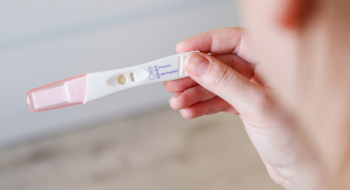If you experience cold hands and feet year round, you’re not alone.
Struggling with cold extremities is a common complaint, says Tidelands Health family medicine physician Dr. Roxanne Latimer, who practices at Tidelands Health Medical Park at The Market Common. Fortunately, unless your symptoms include pain or skin discoloration, they probably aren’t caused by a serious medical condition.
Here are five things to know if you struggle with cold hands and feet:
Some people just have cold extremities
Your extremities are typically the last parts of your body to warm up when exposed to the cold. If you often have cold hands and feet, that may simply be your body’s way of regulating its core temperature as it adjusts to the exterior temps around it. Generally speaking, cold hands and feet are not cause for alarm, though you should consider speaking with a physician or another qualified care provider if you have concerns.
Cold extremities can be caused by circulatory problems
One medical condition that can cause cold hands and feet is peripheral arterial disease, which is a common circulatory problem in which blood flow in the arms and legs becomes constricted due to a buildup of fatty deposits on the arterial walls. Regular exercise and a healthy diet can help treat the condition. Patients who smoke are encouraged to stop. Blood thinning medication may be prescribed, and for more serious circulation problems, a stent may be inserted in the large arteries in the leg to restore blood flow.
Another cause: hypothyroidism
Called hypothyroidism, an underactive thyroid is a condition in which the body is unable to produce adequate hormones to generate energy for the body’s cells. An insufficient supply of hormones leads to a sluggish metabolism, leaving the body slow to adjust to colder environments.
Raynaud’s phenomenon – benign but alarming
If your fingers or toes suddenly swell and turn white in response to cold temperatures, stress or vibration, you could have a benign condition called Raynaud’s phenomenon. Raynaud’s isn’t dangerous, but it can be alarming.
People with Raynaud’s can experience a sudden constriction of blood vessels that can cause hands to swell and fingers to turn white. Even though it presents like a circulatory problem, it’s not, and no damage occurs. If the condition becomes troublesome, and you are unable to avoid the triggers that can cause it to occur, medications can be prescribed to reduce its incidence, Dr. Latimer says.
When to see a physician
When your cold hands and feet are accompanied by skin discoloration, severe pain, sores that won’t heal, numbness or tingling, hardened or tightened skin or fatigue – all of which can signal a circulation problem – you should seek a medical evaluation. Compromised circulation in the extremities can lead to tissue damage, so it’s best to get checked out promptly if you notice concerning symptoms.
Remedies for cold hands and feet.
Depending on what’s causing your chilly extremities, there are strategies you can employ to help reduce your discomfort.
- Wear wool socks, warm slippers and gloves for cold feet.
- Use handwarmers for cold fingers.
- Keep your core temperature warm by wearing layered clothing.
- Avoid caffeine and nicotine, which can constrict blood flow to the extremities.
- Exercise regularly and avoid sitting still for long periods of time, which can decrease blood flow to the extremities.
- Sit with both feet on the floor rather than crossing your legs, which has been shown to interfere with blood flow to the feet.
- Massage your hands and feet regularly to increase blood flow.

Dr. Roxanne Latimer
Family Medicine Physician, Tidelands Health Family Medicine at Murrells Inlet
Bio
Dr. Roxanne Latimer, a board-certified family medicine physician, practices at Tidelands Health Family Medicine at Murrells Inlet. She is accepting new patients.
Learn MoreMedical Education
Education
Boston University School of Medicine
Residency
UMass Memorial Health Care, Family Medicine
Meet the Expert
Dr. Roxanne Latimer
Dr. Roxanne Latimer, a board-certified family medicine physician, practices at Tidelands Health Family Medicine at Murrells Inlet. She is accepting new patients.




